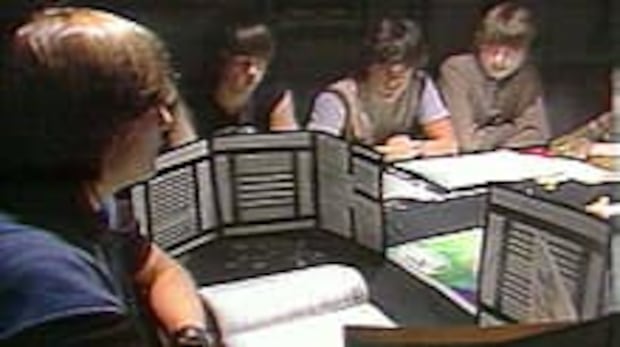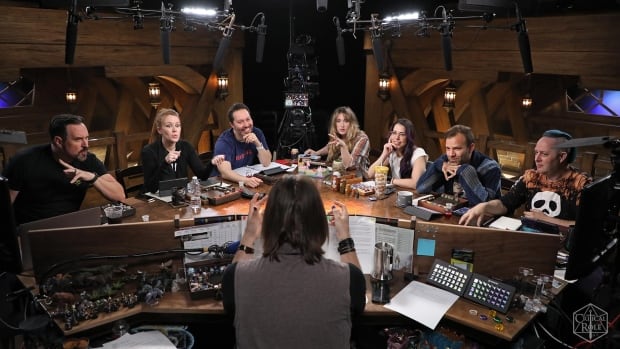
The Current12:37Battling goblins, live on the radio
Dungeons & Dragons is everywhere, from blockbuster movies to popular TV shows and even Lego sets. It’s cool now.
But that wasn’t the case when Rui Albino of Toronto started playing the popular tabletop role-playing game, which is celebrating its 50th anniversary this year.
“It was almost a secret society because it was, I mean, nerd was not cool back then. And playing D&D wasn’t cool,” said Albino, 56, who first played the game in the 1980s.
Since its creation, millions have played the game, and it’s become a fixture of popular culture. The Netflix show Stranger Things heavily references the show. A blockbuster movie starring Chris Pine, Dungeons & Dragons: Honor Among Thieves, grossed $274 million worldwide in 2023.
“It’s not just nerds playing the game anymore. A lot of people from all sorts of different aspects of life have been drawn to the game,” John Dempsey, who runs games of Dungeons & Dragons in Toronto, told The Current host Matt Galloway.
And while the game is flourishing now, for many years it was unpopular, considered a game for nerds, and even branded by some as a gateway to satanic worship and murder.
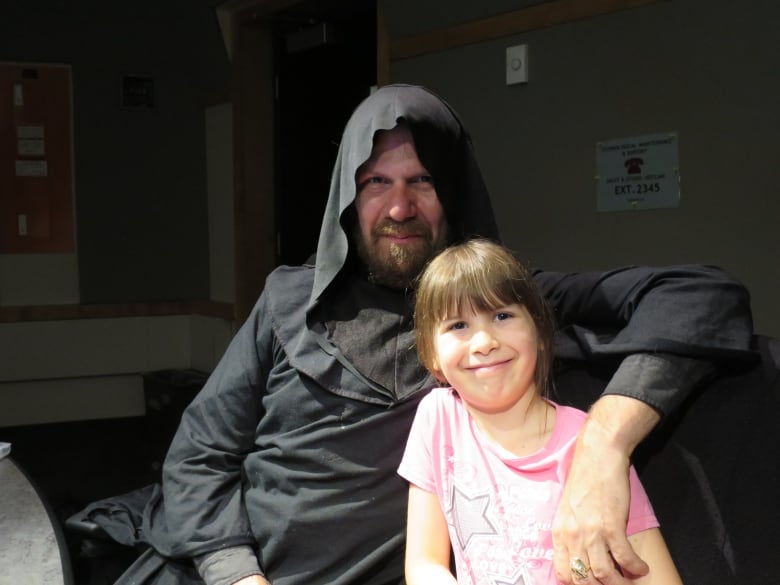
What is Dungeons & Dragons?
Dungeons & Dragons was created by game designers Gary Gygax and David Arneson in 1974. The pair enjoyed playing historical war games, and wanted to make a system of their own.
So they developed a tabletop role-playing game set in their own universe populated by humans, elves, halflings and dwarves for players to explore.
The rules of the game have changed over the years — including a major update this year — but the core idea remains the same.
Players start by creating their characters, including choosing their class such as noble fighter or studious wizard.
A separate player called the dungeon master narrates the story for the others, determining success and failure along the way with the help of a 20-sided die.
Want to swing your sword at the goblin? Roll for it. Want to pickpocket the shopkeeper? Roll for it.
“It was definitely a place where my imagination ran wild and we could experience being someone else in another time,” said Albino, who started playing when he was in Grade 8.
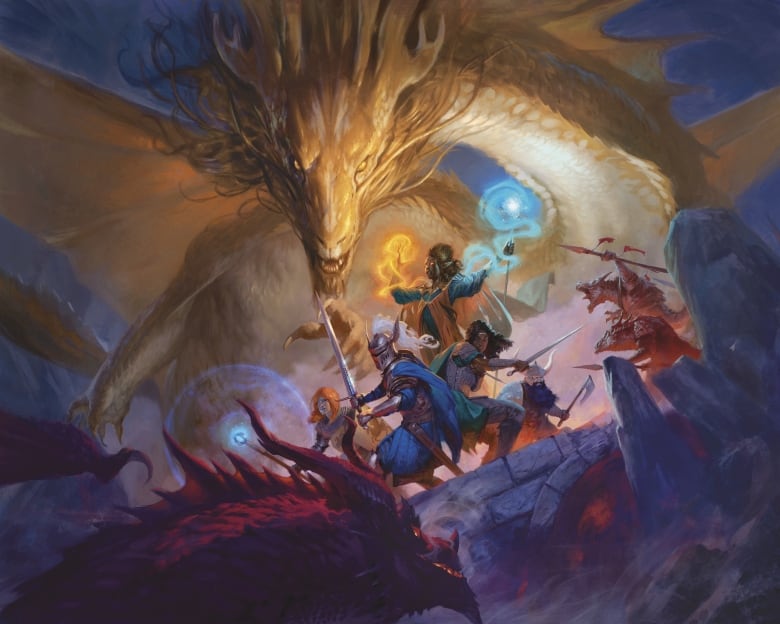
The ‘satanic panic’
The game started to become popular in the late 1970s. Most people, like Albino, were introduced by a friend, and as friends told friends, the game picked up steam.
But as it did, some parents worried it might be a negative influence on their kids. The reaction was part of what became known as the “satanic panic” in North America. There was a heightened fear of satanic and demonic influences, from games of Dungeons & Dragons to movies to rock ‘n’ roll.
The game gained notoriety with the disappearance of James Dallas Egbert III, a 16-year-old student at Michigan State University, in 1979. Investigators and journalists connected Egbert’s disappearance to a game of Dungeons & Dragons he had been playing with his friends.
In 1985, a popular role-playing game called Dungeons & Dragons is at the centre of controversy.
Egbert was eventually found, but a year later, died by a self-inflicted gun shot wound. His connection to Dungeons & Dragons propelled a discussion around the game.
People started linking murders and disappearances to the game, accusing it of introducing children to demonology, witchcraft and murder, since it mentioned demons, devils, and all sorts of fictional spells and incantations. Fundamentalist religious groups wanted the game banned.
According to a report by CBC in 1985, the game was banned in some Canadian schools.
“I had an aunt that was a Jehovah’s Witness, and she basically said that it’s a form of sorcery and you’re basically being blasphemous,” said Albino.
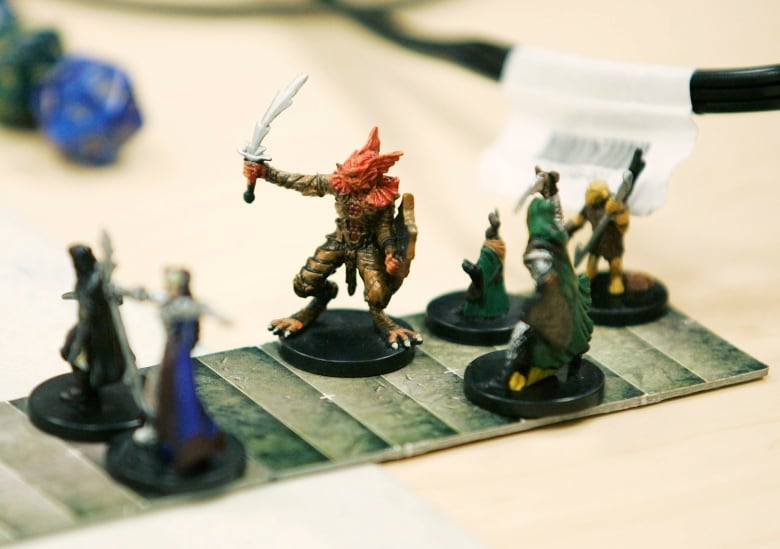
Gygax called it a “witch hunt” in a segment on the CBS show 60 Minutes in 1985.
Despite his aunt’s protests, Albino’s mother wasn’t concerned about the game. She was just happy he was at home, and not getting into any other mischief. But he definitely didn’t broadcast that he was playing the game either.
“I can remember my father going, ‘You guys are still down here? Don’t you want to go out?’ And my older brother would be like, ‘What are you doing here? Why aren’t you at a bar meeting girls?'” he said.
A shift
The game eventually shook off its most negative connotations. According to Chris Prynoski, it took time and a more accepting public.
“In the late ’90s, early 2000s, it wasn’t really on anybody’s radar. And I think when that happens you can kind of reset and have an entirely different perception,” said Prynoski, a long-time Dungeons & Dragons player and founder of the animation studio Titmouse.
Then the fifth edition of the game came out in 2014, which brought new rules and mechanics that made the game easier to play, and more accessible.
Aabria Iyengar started playing shortly after that in 2015. She was a NCAA Division 1 volleyball player, and had rejected her first invitation to play the game. She says even back then, it wasn’t that cool to play.

But when her now-husband invited her to play, she decided to go along, and was quickly hooked.
“Everyone else is like, what a delightful way to spend a Sunday afternoon…. And I felt feral and sweaty pretty immediately. Like, ‘Oh, this is everything I’ve wanted,'” said Iyengar.
“It just flipped on every light in sort of a dusty house. And I was like, ‘Oh, this is my whole thing now.'”
That passion turned into a career.
Streamed games of Dungeons & Dragons has become popular entertainment for many, with groups such as Critical Role amassing millions of subscribers for their weekly steams on YouTube and Twitch. Iyengar has appeared on Critical Role, and other programs such as Dimension 20, as both a player and Dungeon Master.
WATCH | Aabria Iyengar dungeon masters on Critical Role:
Iyengar, who has been on Critical Role herself, says those types of shows have provided a way in for a wider audience. She also credits the popularity bump to the rise of nerd culture. When she was a kid, reading comic books was considered nerdy.
“But now, I would argue that you cannot call Marvel nerdy anymore. If nerdy is a small thing in the corner, you can’t call the biggest-franchise-by-far nerdy,” said Iyengar.
“I think D&D is now moving with the same weight through the space.”
Jess Lanzillo, vice president of product and franchise for Dungeons & Dragons, says that era of Dungeons & Dragons in the ’80s doesn’t drive the company’s decision making today.
“At this point, I don’t think it necessarily points us to like avoid challenging material,” said Lanzillo.
“I think we’re just in a different time now. And because the game is so much more popular, it can be so many more things.”
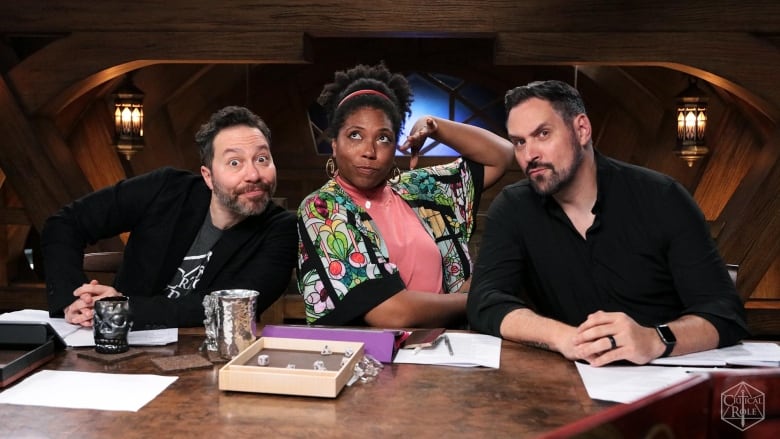
Why it resonates
Lanzillo says she was picked on as a child for being weird. But, she says, she’s thankful Dungeons & Dragons is no so stigamatized.
“To be able to like see that cool, creative, brilliant kids specifically don’t have that experience, and that their creativity and their weirdness and the fact they like monsters and … make believe is valued is like the most heartwarming thing to me,” said Lanzillo.
Dungeons & Dragons continues to be a big part of Chris Prynoski’s life. His studio worked on Amazon Prime’s series The Legend of Vox Machina, which is based on Critical Role’s adventures.
Prynoski recently gave $5,000 US to charity so he could spend a year with a legendary relic called the Sandal of Gygax, an actual sandal made by game creator Gary Gygax.
He says the game has created long-lasting friendships.
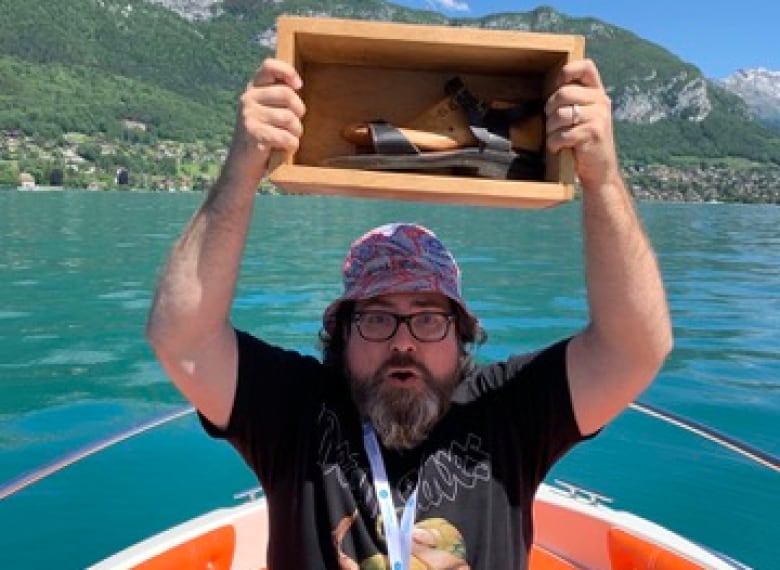
“I think it forged a lot of my friend groups,” said Prynoski. “It’s our version of like a poker night or some kind of thing where people get together regularly and have a good time.”
When Albino was a kid, it was all about getting to be a mage or warrior, and letting his imagination run wild. But it’s also inspired the work in his career as a storyboard artist for animated shows and video games. He’s even developing his own tabletop role-playing game.
“In hindsight, it was definitely the stories. It was all about the stories,” said Albino.
